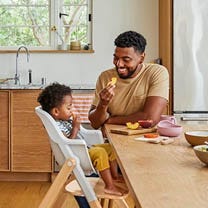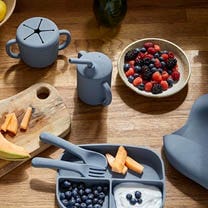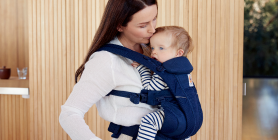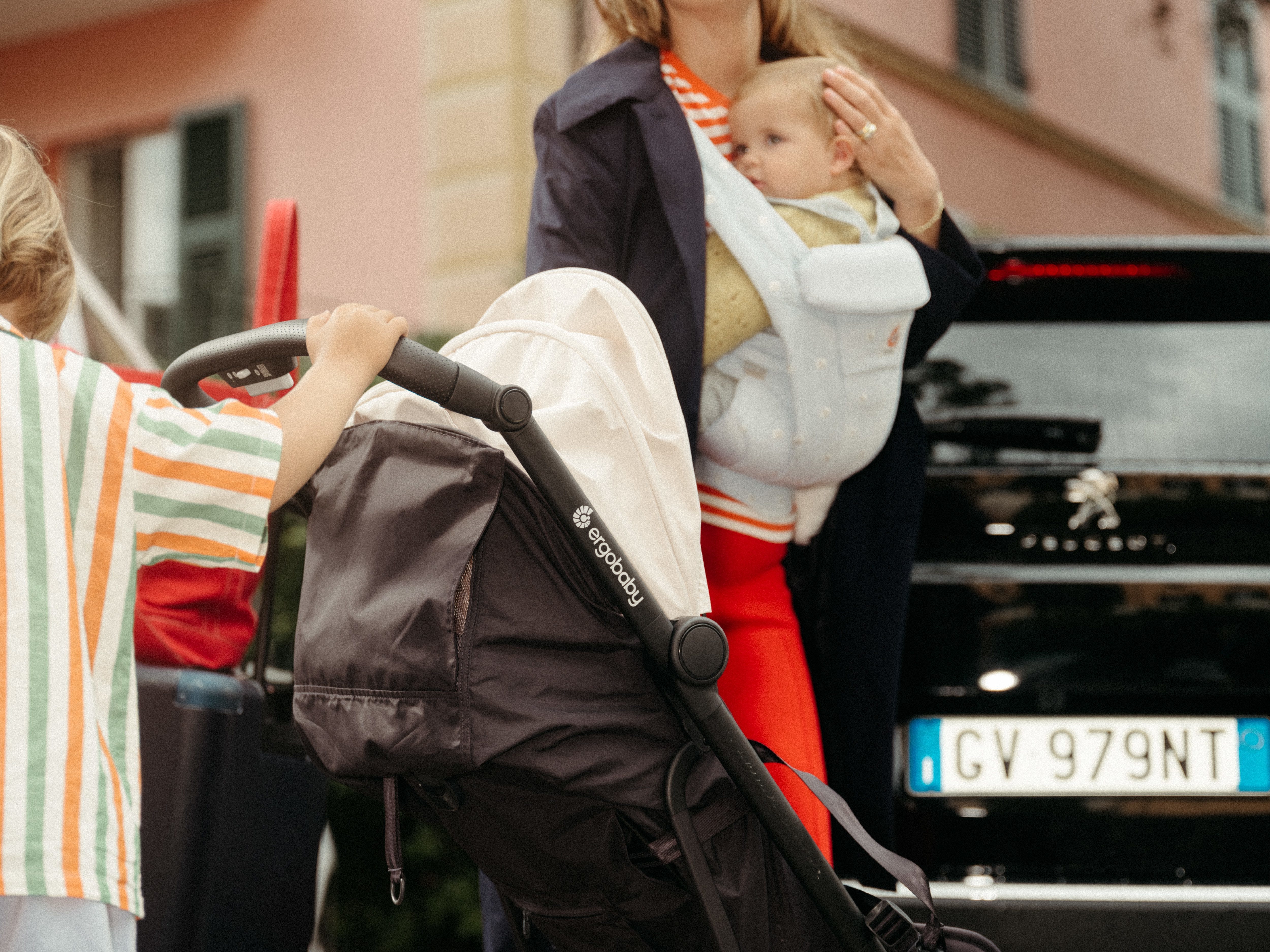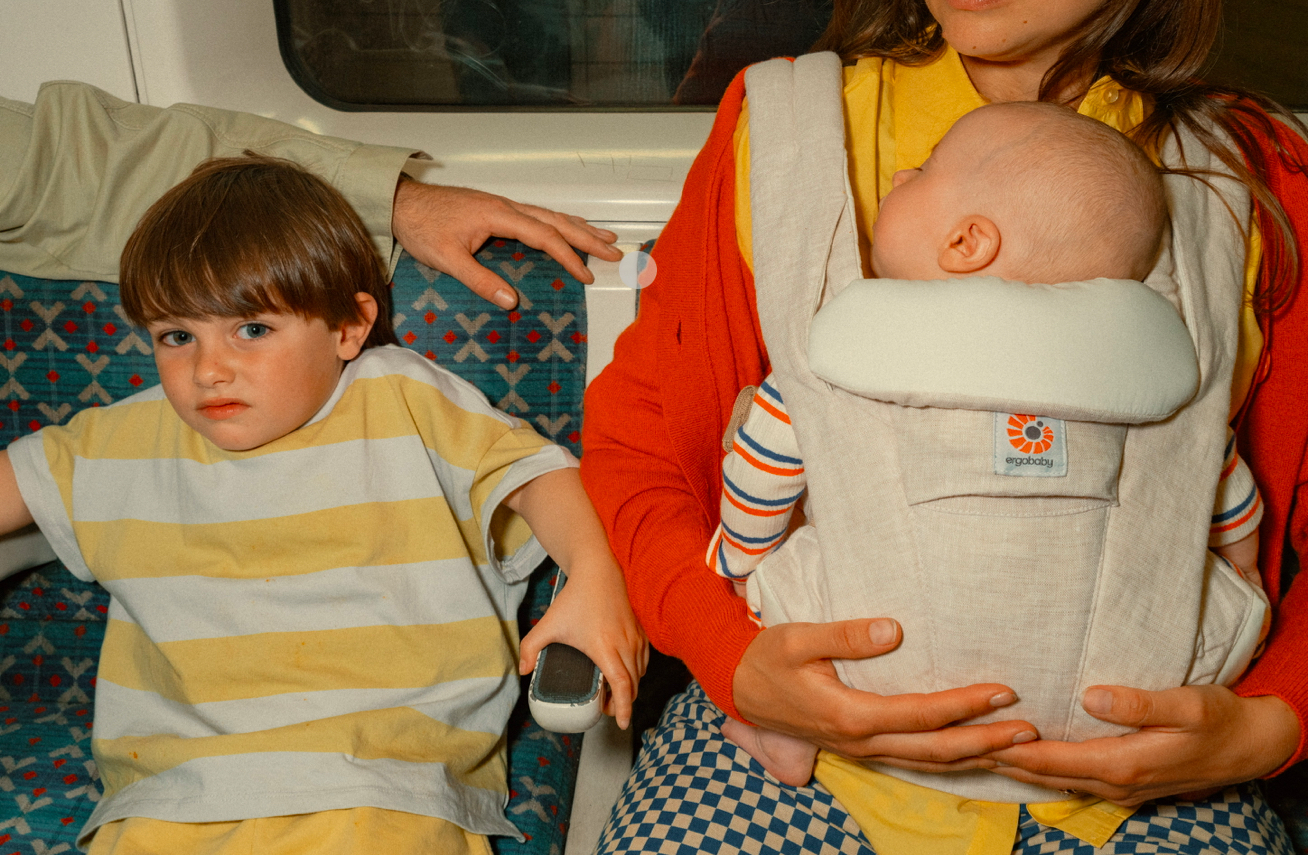
Can you use a baby carrier in a car?
Why Baby Carriers Are Not a Substitute for Car Seats
When you’re on the go with your little one, it might be tempting to use a baby carrier in the car for convenience. However, baby carriers and car seats serve entirely different purposes and should never be used interchangeably. In this article, we’ll explore why baby carriers are not safe for use in cars, the importance of car seats, and what you should do instead to keep your baby safe on the road.
Emotional Benefits of Getting Outside
Spending time in nature with your baby can strengthen the bond between you. The simple act of holding your baby close, feeling their warmth, and sharing new experiences together can create strong emotional connections. It’s also a wonderful way to reduce stress and improve your mood. When my littles were extra fussy, I’d take a walk around the neighborhood. Even though I don't live in an area with trails and surrounded by nature, simply behind outside changed everything. A little vitamin D does wonders!
Cognitive Development
Nature is a sensory wonderland for babies. The different sights, sounds, and smells can stimulate your baby’s senses and promote cognitive development. Watching leaves rustle, hearing birds chirp, and feeling the texture of a tree bark can all contribute to their learning and development.
All About Baby Carriers for Nature Adventures
Choosing the Right Baby Carrier
When it comes to selecting the best baby carrier for summer adventures, there are several options to consider.
Types of Baby Carriers:
- Wraps: Perfect for newborns, providing a snug and secure fit.
- Slings: Ideal for quick and easy use, offering good ventilation.
- Soft Structured Carriers: Versatile and comfortable for both parent and baby, suitable for longer trips.
Discover which baby carrier is right for you!
Emotional Benefits of Getting Outside
Spending time in nature with your baby can strengthen the bond between you. The simple act of holding your baby close, feeling their warmth, and sharing new experiences together can create strong emotional connections. It’s also a wonderful way to reduce stress and improve your mood. When my littles were extra fussy, I’d take a walk around the neighborhood. Even though I don't live in an area with trails and surrounded by nature, simply behind outside changed everything. A little vitamin D does wonders!
Cognitive Development
Nature is a sensory wonderland for babies. The different sights, sounds, and smells can stimulate your baby’s senses and promote cognitive development. Watching leaves rustle, hearing birds chirp, and feeling the texture of a tree bark can all contribute to their learning and development.
What are the differences between a car seat and a baby carrier?
Exploring Nature with a Baby Carrier
|
Feature Designed for Vehicle Safety |
|
Crash-Tested |
|
Harness System |
|
Impact Protection |
|
Legal Requirement |
|
Car Seat Yes |
|
Yes |
|
5-point harness to secure the child |
|
Energy-absorbing materials |
|
Required by law for car travel |
|
Baby Carrier No |
|
No |
|
Straps designed for comfort & mobility |
|
None |
|
Not approved for car travel |
- Car seats are crash-tested and built to withstand impact, providing critical protection for babies in the event of an accident.
- Baby carriers are designed for comfort and mobility, allowing parents to wear their baby while walking, shopping, or traveling—but not for use in vehicles.
Can you use a baby carrier in a car?
The short answer is no. A baby carrier in a car offers no protection in a crash and puts your child at serious risk of injury.
Why Babywearing in a Car Is Dangerous
1. Lack of Crash Protection – Baby carriers do not have the necessary safety features, such as reinforced impact zones, that protect babies in crashes.
2. Risk of Ejection – In a collision, the force could eject the baby from the carrier, causing severe injury.
3. Airbag and Impact Risks – The lack of a secure structure means the baby could hit hard surfaces or be crushed between the wearer and the seatbelt.
What do studies say?
According to The Car Seat Lady, baby carriers are not crash-tested for vehicles, making them completely unsafe for use in cars. Safety experts stress that babies should always be secured in an appropriate car seat, even for short trips.
Safe Alternatives for Car Travel
Use an infant car seat that is properly installed in the back seat.
If you don’t want your baby in a car seat all day, consider using a compact stroller like the Metro 3 which is car seat-compatible for smooth transitions in and out of the car.
For quick errands or travel, the Away Portable Baby Carrier provides a portable babywearing option once you’ve safely arrived at your destination.
Can you wear a baby carrier in a taxi or Uber?
Parents may wonder, can you wear a baby carrier in a taxi or other rideshare services like Uber or Lyft? While many places have loose car seat laws for taxis, safety should always come first.
Are car seats required in taxis?
In many states and countries, taxis are exempt from standard car seat laws, meaning parents can legally hold a baby in a carrier.
However, experts strongly discourage this, as it poses the same dangers as wearing a baby carrier in a personal car.
What’s the best option for taxi or Uber travel?
- Bring a car seat: Even if it takes extra time, using a properly installed car seat is the safest option.
- Use a travel-friendly stroller: The Metro 3 Stroller is lightweight, compact, and car seat compatible making it easier to travel with an infant car seat.
- Plan ahead: If you're traveling in a city with frequent taxi use, consider bringing an easy-to-install car seat or renting a car instead.
For more safety tips on car travel, read our guide: Baby Car Safety: 11 Major Things to Keep in Mind.
When to Wear a Baby Carrier
Baby carriers are a fantastic way to keep your little one close while maintaining mobility and convenience. However, knowing when to wear a baby carrier versus when to use a car seat or stroller is essential for safety and comfort.
Best Times to Wear a Baby Carrier
1. Walking or Running Errands
A baby carrier is perfect for quick trips to the store, navigating crowded spaces, or walking around the neighborhood. It keeps your hands free while keeping your baby snug and secure.
2. Traveling Through Airports
Security checks and boarding planes are much easier when babywearing. You can continue to keep baby close throughout the airport too!
3. Hiking or Outdoor Adventures
For parents who love the outdoors, a baby carrier allows you to navigate trails and uneven terrain more easily than a stroller.
4. Soothing a Fussy Baby
Babies love the warmth and security of being held close. Babywearing can help calm a crying or colicky baby by providing gentle motion and skin-to-skin contact.
5. To Bond and Keep Baby Close
Studies show that wearing your baby can reduce postpartum depression, strengthen your bond, increase breastfeeding success and so much more!
6. Breastfeeding on the Go
Some carriers allow for discreet breastfeeding while keeping your baby in a comfortable position. Safety always comes first. After nursing, you need to readjust the baby’s position so their airways are visible, and their head is kissable. Here is more info about breastfeeding in a carrier.
7. Navigating Public Transportation
In buses, trains, and subways where stroller space is limited, a baby carrier makes travel more convenient.
When NOT to Wear a Baby Carrier
1. In a Car
A baby carrier in a car is not a substitute for a car seat. Always use an approved, crash-tested infant car seat.
2. While Cooking or Near Open Flames
Avoid babywearing when working over a stove or near hot surfaces to prevent burns.
3. When Sleeping
While babywearing may help soothe your baby to sleep, never sleep while wearing your baby, as it increases the risk of positional asphyxiation.
4. During High-Impact Activities
Avoid wearing a baby carrier while running, cycling, or engaging in strenuous exercise that could pose a safety risk.
For more information on babywearing safety and best practices, check out: 9 Things You Want to Know About Babies Sleeping in Baby Carriers.
Safety First in Every Ride
While babywearing is a wonderful way to bond with your baby, it should never be used in a moving vehicle. A baby carrier in a car is not safe because it lacks the protective features of a properly installed car seat. Whether driving your own car or taking a taxi, always prioritize car seat safety to keep your baby secure on the road.
For safe and convenient baby travel, check out the Metro 3 Stroller and Away Portable Baby Carrier to make transitions easier while keeping safety a top priority.















